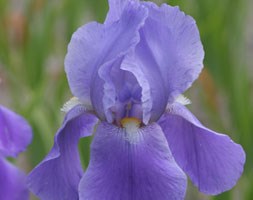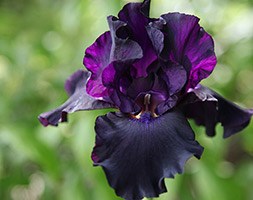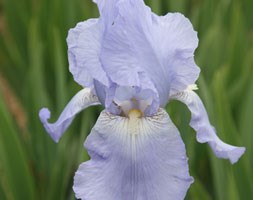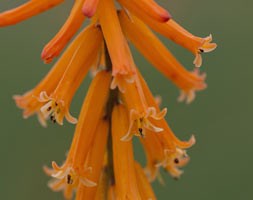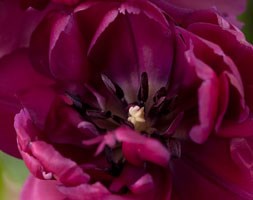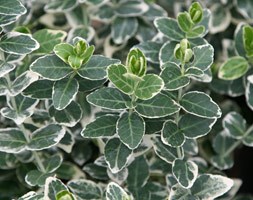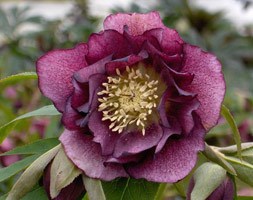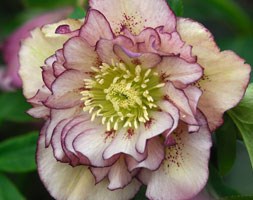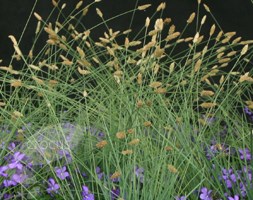Price reductions at Crocus
by Sarah - October 1st, 2014.Filed under: Crocus, Price Reductions.
Crocus has cut the price of these products
Iris ‘Blue Rhythm’ (bearded Iris) was £6.99 now £1.99
Position: full sun or partial shade Soil: well-drained, moderately fertile soil Rate of growth: average Flowering period: May and June Hardiness: fully hardy This cultivar is noted for its lemon scented blooms, which appear for a long period just above the fans of mid-green foliage. The falls of the cornflower blue flowers have an orange beard and are crowned cornflower blue flowers have an orange beard and are crowned Garden Care: Plant shallowly with the upper part of the rhizome sitting on the surface of the soil, incorporating a low nitrogen fertiliser in the planting hole. After planting remove the upper-most third of the leaves to protect against wind-rock. In exposed areas stake with bamboo canes in early spring. Remove the stems after flowering from the base as this will concentrate the plant’s energy into producing new rhizomes. Divide and replant about every three years.
Iris ‘Superstition’ (bearded iris) was £6.99 now £1.99
Position: full sun Soil: well-drained, neutral to slightly alkaline soil Rate of growth: average Flowering period: April to May Hardiness: fully hardy A stunning, bearded iris with dusky, purple-black flowers from April to May and grey-green, sword-like leaves. It looks fabulous planted in drifts in a well-d rained, sunny border, as a complement to other blue and purple flowers, or to provide a dramatic accent among paler flowers. Plant towards the middle of the border to fully appreciate the colour. Garden Care: Plant shallowly with the upper part of the rhizome sitting on the surface of the soil, incorporating a low nitrogen fertiliser in the planting hole. After planting remove the upper-most third of the leaves to protect against wind-rock. In exposed areas stake with bamboo canes in early spring. Remove the stems after flowering from the base as this will concentrate the plant’s energy into producing new rhizomes. Divide and replant about every three years.
Iris ‘Jane Phillips’ (bearded iris) was £6.99 now £1.99
Position: full sun or partial shade Soil: well-drained, moderately fertile, neutral to acidic soil Rate of growth: average Flowering period: May and June Hardiness: fully hardy Deservedly popular, this has delicate flax-blue, slightly fragrant flowers with spectacular, ruffled petals in May and June and fans of sword-shaped, grey-green leaves. This tall bearded iris is gorgeous planted en masse in a sunny, well-drained border or as part of a cottage-garden scheme. Garden care: Plant shallowly with the upper part of the rhizome sitting on the surface of the soil, incorporating a low nitrogen fertiliser in the planting hole. After planting remove the upper-most third of the leaves to protect against wind-rock. In exposed areas stake with bamboo canes in early spring. Remove the stems after flowering from the base as this will concentrate the plant’s energy into producing new rhizomes. Divide and replant about every three years.
Kniphofia triangularis subsp. triangularis ‘Light of the World’ (red hot poker) was £6.99 now £2.99
Position: full sun or partial shade Soil: fertile, humus-rich, moist, well-drained soil Rate of growth: average Flowering period: August to September Hardiness: fully hardy A deciduous perennial with arching, grass-like foliage and slender spikes of tubular orange flowers. Blooming in late summer and autumn, it will provide valuable colour to prairie or cottage style planting schemes. Garden care: In autumn remove and compost the faded, flower spikes and apply a deep, dry mulch around the crown of the plant. Divide and re-plant overcrowded colonies in spring.
Tulipa ‘Purple Jacket’ (double late tulip bulbs) was £4.99 now £2.99
Position: full sun Soil: fertile, well-drained soil Rate of growth: average Flowering period: April to May Flower colour: pinkish purple Other features: excellent cut-flowers Hardiness: fully hardy Bulb size: 12+ Big, blousy blooms that are made up of many purple petals, seem to last for ages on top of their sturdy upright stems. A magnificent addition to the spring bedding display, they will blend well with most shades of pink, purple and blue. Garden care: From September to December plant bulbs 15-20cm deep and 10-15cm apart in fertile, well-drained soil. Alternatively, allow 7-9 bulbs per 30cm sq. After flowering dead-head and apply a balanced liquid fertiliser each week for the first month. Once the foliage has died down naturally lift the bulbs and store in a cool greenhouse.
Euonymus fortunei ‘Emerald Gaiety’ (winter creeper) was £4.99 now £3.99
Position: full sun or partial shade Soil: any well-drained soil Rate of growth: fast-growing Flowering period: May and June Hardiness: fully hardy Clusters of insignificant, green flowers appear in May and June among small, lus trous, green leaves with white margins that are pink-tinged in winter. This pop ular, bushy, variegated, evergreen shrub makes excellent groundcover and is a ma instay of low-maintenance gardens, but it also makes a good foil for more orname ntal flowering shrubs. It is tough and will thrive in any well-drained border i n sun or partial shade. Garden care: Tip prune young plants in mid to late spring to encourage bushy growth and apply a generous 5-7cm (2-3in) mulch of well-rotted garden compost or manure around the base of the plant. Remove any plain green-leaved shoots as soon as they appear, cutting them back to the original branch.
Helleborus x hybridus ‘Double Ellen Red’ (hellebore Double Ellen Red) was £9.99 now £4.99
Position: partial shade Soil: heavy, neutral to alkaline soil Rate of growth: average Flowering period: February to April Flower colour: reddish-pink Other features: all parts of the plant cause severe discomfort if ingested; the sap may cause skin irritation Hardiness: fully hardy Heavily spotted, red-pink flowers and dark green foliage, make these perennials a fine addition to winter-themed containers, especially when under-planted with early spring flowering bulbs. Their dainty appearance belies their tough and resilient nature. Garden care: Add lots of well-rotted leaf mould or organic matter to the planting hole. Cut the old leaves back down to the ground in January or February as this will show off the new emerging flowers to best effect. It will also help to get rid of foliar diseases such as Hellebore leaf spot. Apply a generous 5-7cm (2-3in) mulch of well-rotted organic matter around the base of the plant in autumn and provide a top-dressing of general fertiliser each spring. Cut off the seed heads to prevent inferior seedlings colonising.
Helleborus x hybridus ‘Double Ellen Picotee’ (hellebore Double Ellen Picotee) was £9.99 now £4.99
Position: partial shade Soil: heavy, neutral to alkaline soil Rate of growth: average Flowering period: February to April Flower colour: mainly white Other features: all parts of the plant cause severe discomfort if ingested; the sap may cause skin irritation Hardiness: fully hardy Each creamy white petal is variably spotted, and edged with a deep plum-pink, thus creating delightful bi-coloured flowers, which appear in loose cymes. If left undisturbed in the border, the evergreen foliage will form dense, slowly expanding clumps. Garden care: Add lots of well-rotted leaf mould or organic matter to the planting hole. Cut the old leaves back down to the ground in January or February as this will show off the new emerging flowers to best effect. It will also help to get rid of foliar diseases such as Hellebore leaf spot. Apply a generous 5-7cm (2-3in) mulch of well-rotted organic matter around the base of the plant in autumn and provide a top-dressing of general fertiliser each spring. Cut off the seed heads to prevent inferior seedlings colonising.
Sesleria nitida (nest moor grass) was £9.99 now £7.99
Position: grows in both full sun or lightly dappled shade Soil: moderately fertile, well drained, neutral or slightly alkaline Rate of growth: average Flowering period: July to October Hardiness: fully hardy A native of central and southern Italy, this gorgeous little grass is grown mainly for its colourful foliage. It forms dense mounds of pale grey-green to grey-blue leaves, which stay on the plant throughout the year. In spring it throws up whitish green cone-shaped flowerspikes, that bobble about in the breeze. Once established it can be very drought tolerant, and it looks great in a herbaceous or mixed border or wildflower meadow. Garden care: Gently comb through the foliage in spring to remove some of the older foliage and to encourage fresh new growth.







